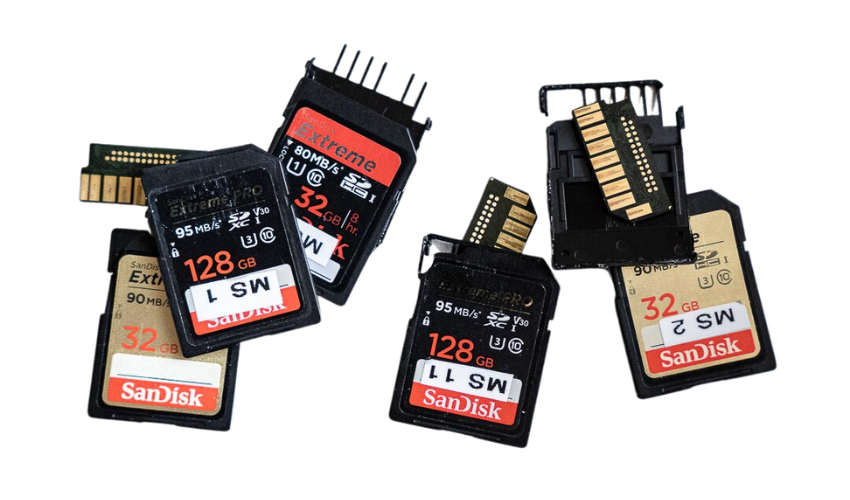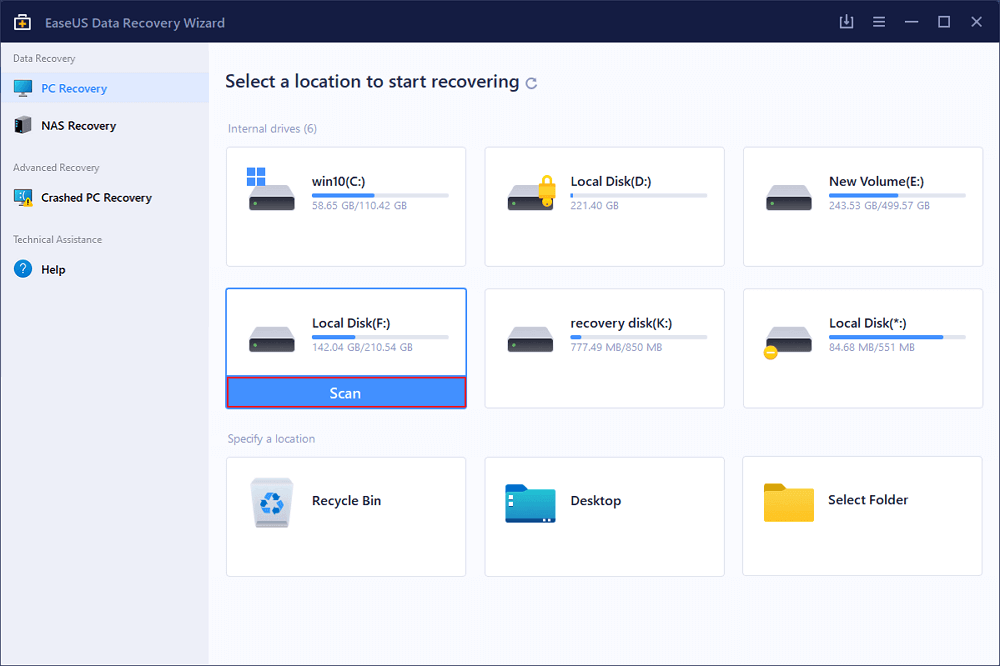[Newest Guide] Fixing SD Card Reading Issues on Nintendo Switch

Is your Nintendo Switch experiencing trouble reading your SD card? If so, don’t worry, as we have the solutions you need. In this guide, we will explore the reasons behind the SD card reading issue on your Nintendo Switch and provide you with effective steps to fix it. So, are you ready to regain seamless access to your gaming data? Let’s dive in and unravel the mysteries of the SD card reading problem on your Nintendo Switch.
1. Possible Reasons for the SD Card Reading Issue
1.1 Incompatible SD Card
One of the primary reasons your Switch might not be reading your SD card is that it could be incompatible. The Switch console supports microSD and microSDHC cards up to 2TB in size. If your SD card is not within this range, it might not be recognized by the console. Make sure to check the compatibility of your SD card with the Nintendo Switch specifications to ensure it meets the requirements.
1.2 Incorrectly Inserted SD Card
Another common issue is an improperly inserted SD card. The Switch console features a slot on the backside for inserting the SD card. Sometimes, users might accidentally insert the card the wrong way, leading to reading problems. Ensure that you insert the SD card into the slot correctly, with the label facing up, and push it gently until it clicks into place.

1.3 Dirty or Damaged SD Card
Dust, debris, or physical damage on the SD card can hinder proper communication between the card and the console. Inspect the SD card for any signs of dirt, scratches, or other visible damage. If needed, clean the SD card using a soft, lint-free cloth and ensure it is dry before reinserting it into the console.
1.4 Corrupted SD Card File System
Over time, the file system on an SD card can become corrupted, causing reading issues on various devices, including the Switch. This corruption can occur due to improper ejection, sudden power loss, or even malware. To fix this, you can try inserting the SD card into a computer and using the appropriate software to repair the file system. Additionally, consider backing up the card’s data before attempting any repair methods.
1.5 Firmware or Software Issue
Sometimes, a firmware or software glitch within the Switch console itself can lead to problems with reading SD cards. Ensure that your console’s software is up to date by connecting to the internet and checking for system updates. If an update is available, install it and restart your console before attempting to read the SD card again.
2. Effective Solutions to Fix an SD Card Reading Issue on a Nintendo Switch
Solution 1: Restart your Nintendo Switch
-
Turn off your Nintendo Switch console by pressing and holding the power button.
-
Wait for a few seconds to ensure that the console is completely powered down.
-
Press the power button again to turn on the Nintendo Switch.
-
After the console restarts, check if the SD card is now being recognized.
Solution 2: Check the SD Card for Compatibility
-
Ensure that the SD card you are using is compatible with the Nintendo Switch.
-
Check the card’s specifications to see if it falls within the supported range (microSD and microSDHC cards up to 2TB).
-
If the SD card exceeds the supported capacity or is a different format, consider using a compatible SD card that meets the console’s requirements.
Solution 3: Verify Proper Insertion
-
Turn off your Nintendo Switch console.
-
Locate the SD card slot on the backside of the console.
-
Gently remove the SD card from the slot.
-
Inspect the SD card for any dust or debris and clean it using a soft, lint-free cloth if necessary.
-
Reinsert the SD card into the slot with the label facing up.
-
Push the card in until you hear a click, ensuring it is securely inserted.
Solution 4: Test the SD Card on Another Device
-
Insert the SD card into a different compatible device, such as a computer or another gaming console.
-
Check if the SD card is recognized and accessible on the other device.
-
If the SD card is not detected on other devices as well, it suggests that the card itself may be faulty or corrupted. Consider replacing it with a new one.
Solution 5: Attempt Another SD Card
-
Obtain a different SD card that is known to be functional and compatible with the Nintendo Switch.
-
Power off your Switch completely.
-
Remove the current SD card from the console’s slot.
-
Insert the alternative SD card into the slot, ensuring it is properly inserted and secured.
-
Power on the Nintendo Switch and check if the new SD card is recognized.
-
If the new SD card is detected, the original SD card may be faulty and should be replaced.
-
If the issue persists, proceed to the next solution.
Solution 6: Clear Nintendo Switch Cache
-
Power off the Nintendo Switch completely.
-
Press and hold the power button along with the volume up and down buttons simultaneously.
-
Keep holding the buttons for a few seconds until the Maintenance Mode menu appears.
-
Select “Clear Cache” from the menu and confirm your choice.
-
Allow the console to complete the cache clearing process.
-
Once done, restart your Nintendo Switch and check if the SD card is now being read.
-
If the issue remains unresolved, proceed to the next solution.
Solution 7: Check for Switch System Update
-
Connect your Nintendo Switch to the internet.
-
From the console’s home screen, navigate to System Settings.
-
Scroll down and select “System” from the menu.
-
Choose “System Update” and follow the prompts to check for and install any available updates.
-
Once the update is complete, restart your console and check if the SD card is recognized.
-
If the issue persists, proceed to the final solution.
Solution 8: Verify Switch Storage Space
-
On the Nintendo Switch home screen, go to System Settings.
-
Scroll down and select “Data Management” from the menu.
-
Choose “Manage Software” and review the storage space of your console.
-
If the available storage is nearly full, consider deleting unnecessary game data or screenshots to free up space.
-
Restart your console and check if the SD card is now being read.
Solution 9: Format the SD Card
-
If the SD card is detected on other devices but not on your Nintendo Switch, it may have a corrupted file system.
-
Before proceeding, make sure to back up any important data on the SD card.
-
Navigate to the settings menu on your Nintendo Switch console.
-
Select System, then Formatting Options.
-
Choose Format SD Card and follow the on-screen prompts to format the card.
-
Keep in mind that formatting will erase all data on the SD card.
Solution 10: Update the Switch System Software
-
Ensure that your Nintendo Switch is connected to the internet.
-
Go to System Settings on your console.
-
Scroll down to System and select System Update.
-
Follow the prompts to download and install any available system updates.
-
Once the update is complete, restart your console and check if the SD card is now recognized.
By following these original and detailed steps, you can effectively troubleshoot and resolve the SD card reading issue on your Nintendo Switch.
3. How to Prevent Data Loss on an SD Card of Nintendo Switch?
By following these measures, you can ensure the safety and integrity of your valuable gaming files.
Step 1: Regularly Back Up Your SD Card Data
-
Set a recurring schedule to back up your SD card data on a separate storage device, such as a computer or external hard drive.
-
Connect your Nintendo Switch to the computer using a USB cable.
-
Open the File Explorer (Windows) or Finder (Mac) and locate the SD card folder within your Nintendo Switch.
-
Copy and paste the entire contents of the SD card to a designated backup folder on your computer.
-
Verify that all files have been successfully transferred before proceeding.
Step 2: Keep Your SD Card Safe from Physical Damage
-
Handle your SD card with care, avoiding bending, dropping, or exposing it to extreme temperatures or moisture.
-
Store your SD card in a protective case or holder when not in use to prevent physical damage.
-
Avoid removing the SD card while the Nintendo Switch is powered on or during data transfers to minimize the risk of data corruption.
Step 3: Implement Reliable Data Recovery Software
-
Download and install trustworthy data recovery software – 4DDiG Data Recovery, on your PC.
-
Connect the SD card, whether damaged or not, to your PC using a card reader or appropriate adapter.
-
Choose the preferred scanning mode (Quick Scan or Deep Scan) to search for lost data on the SD card.

-
During the scanning process, you can switch between the Tree and File Preview options to view details about the recovered data.
-
Once the software has completed scanning and recovered all lost files, select the desired files for recovery.

-
Click the “Recover” button and choose a location on your PC to save the recovered files. Avoid saving them back to the SD card to prevent overwriting existing data.

Step 4: Safely Eject the SD Card
-
Before removing the SD card from your Nintendo Switch or card reader, ensure that all data transfers or operations involving the card have been completed.
-
Follow the proper ejection process by right-clicking on the SD card icon in the file explorer and selecting the “Eject” option.
-
Wait until you receive a notification confirming that it is safe to remove the SD card.
-
Gently remove the SD card from the card reader or the Nintendo Switch’s SD card slot.
4. The Bottom Line
Preventing data loss on an SD card for your Nintendo Switch involves taking proactive measures. Regularly backing up your SD card data, protecting the card from physical damage, utilizing reliable data recovery software when needed, and safely ejecting the card are essential steps to ensure the safety and integrity of your gaming files. By following these original recommendations, you can minimize the risk of data loss and enjoy a worry-free gaming experience on your Nintendo Switch.
